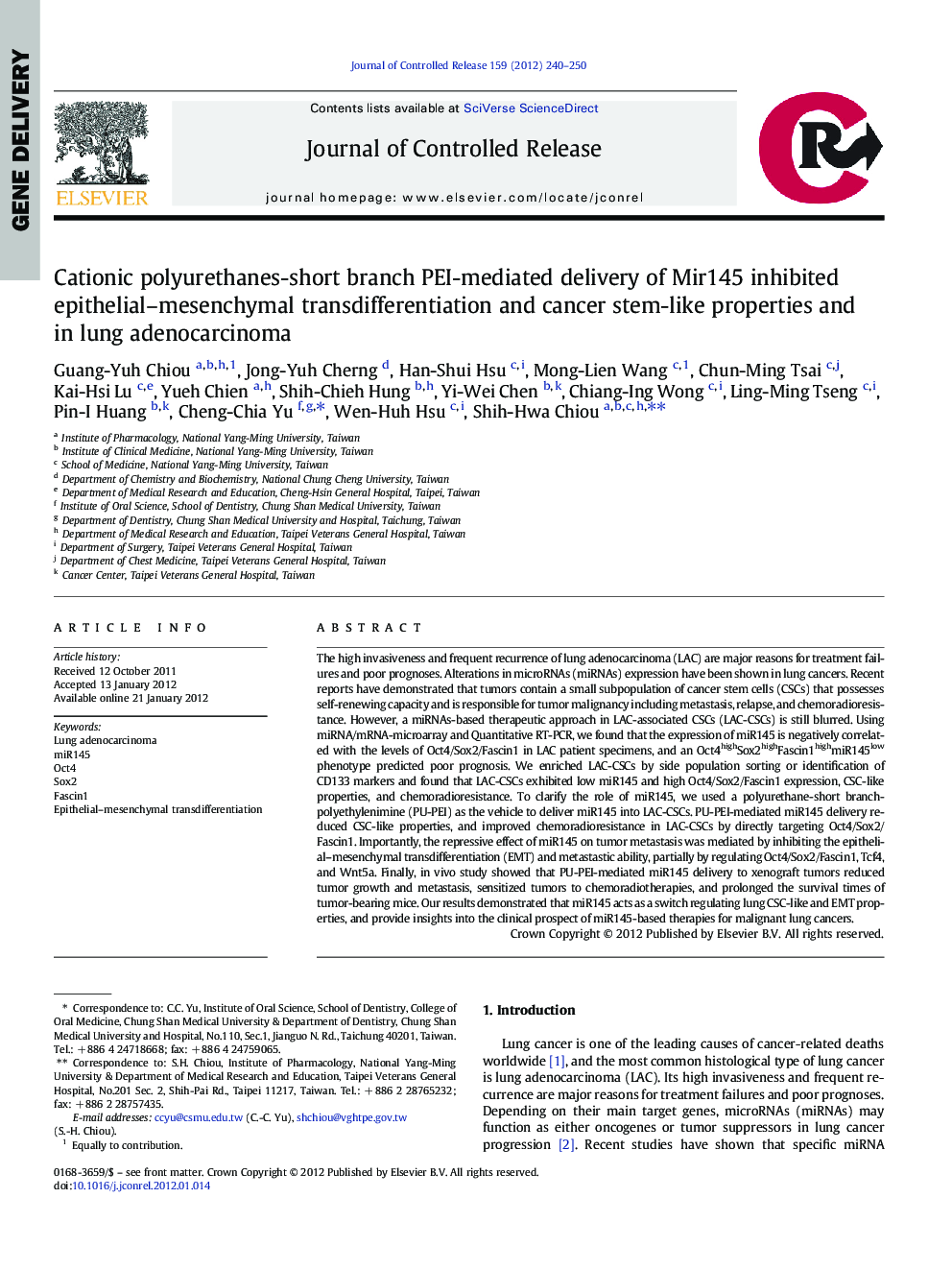| کد مقاله | کد نشریه | سال انتشار | مقاله انگلیسی | نسخه تمام متن |
|---|---|---|---|---|
| 1424809 | 986740 | 2012 | 11 صفحه PDF | دانلود رایگان |

The high invasiveness and frequent recurrence of lung adenocarcinoma (LAC) are major reasons for treatment failures and poor prognoses. Alterations in microRNAs (miRNAs) expression have been shown in lung cancers. Recent reports have demonstrated that tumors contain a small subpopulation of cancer stem cells (CSCs) that possesses self-renewing capacity and is responsible for tumor malignancy including metastasis, relapse, and chemoradioresistance. However, a miRNAs-based therapeutic approach in LAC-associated CSCs (LAC-CSCs) is still blurred. Using miRNA/mRNA-microarray and Quantitative RT-PCR, we found that the expression of miR145 is negatively correlated with the levels of Oct4/Sox2/Fascin1 in LAC patient specimens, and an Oct4highSox2highFascin1highmiR145low phenotype predicted poor prognosis. We enriched LAC-CSCs by side population sorting or identification of CD133 markers and found that LAC-CSCs exhibited low miR145 and high Oct4/Sox2/Fascin1 expression, CSC-like properties, and chemoradioresistance. To clarify the role of miR145, we used a polyurethane-short branch-polyethylenimine (PU-PEI) as the vehicle to deliver miR145 into LAC-CSCs. PU-PEI-mediated miR145 delivery reduced CSC-like properties, and improved chemoradioresistance in LAC-CSCs by directly targeting Oct4/Sox2/Fascin1. Importantly, the repressive effect of miR145 on tumor metastasis was mediated by inhibiting the epithelial–mesenchymal transdifferentiation (EMT) and metastastic ability, partially by regulating Oct4/Sox2/Fascin1, Tcf4, and Wnt5a. Finally, in vivo study showed that PU-PEI-mediated miR145 delivery to xenograft tumors reduced tumor growth and metastasis, sensitized tumors to chemoradiotherapies, and prolonged the survival times of tumor-bearing mice. Our results demonstrated that miR145 acts as a switch regulating lung CSC-like and EMT properties, and provide insights into the clinical prospect of miR145-based therapies for malignant lung cancers.
Figure optionsDownload high-quality image (176 K)Download as PowerPoint slide
Journal: Journal of Controlled Release - Volume 159, Issue 2, 30 April 2012, Pages 240–250